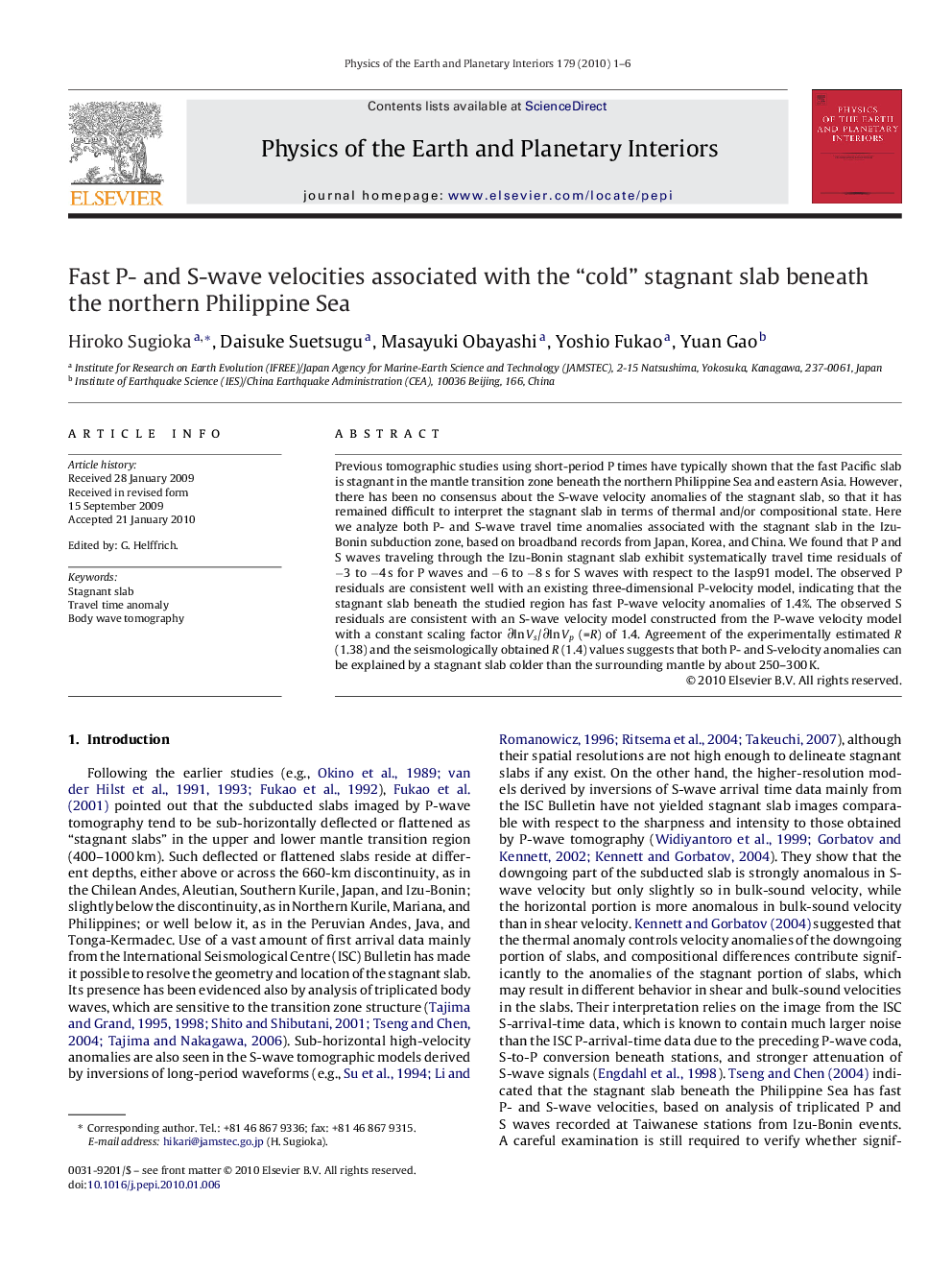| Article ID | Journal | Published Year | Pages | File Type |
|---|---|---|---|---|
| 4742202 | Physics of the Earth and Planetary Interiors | 2010 | 6 Pages |
Previous tomographic studies using short-period P times have typically shown that the fast Pacific slab is stagnant in the mantle transition zone beneath the northern Philippine Sea and eastern Asia. However, there has been no consensus about the S-wave velocity anomalies of the stagnant slab, so that it has remained difficult to interpret the stagnant slab in terms of thermal and/or compositional state. Here we analyze both P- and S-wave travel time anomalies associated with the stagnant slab in the Izu-Bonin subduction zone, based on broadband records from Japan, Korea, and China. We found that P and S waves traveling through the Izu-Bonin stagnant slab exhibit systematically travel time residuals of −3 to −4 s for P waves and −6 to −8 s for S waves with respect to the Iasp91 model. The observed P residuals are consistent well with an existing three-dimensional P-velocity model, indicating that the stagnant slab beneath the studied region has fast P-wave velocity anomalies of 1.4%. The observed S residuals are consistent with an S-wave velocity model constructed from the P-wave velocity model with a constant scaling factor ∂ln Vs/∂ln Vp (=R) of 1.4. Agreement of the experimentally estimated R (1.38) and the seismologically obtained R (1.4) values suggests that both P- and S-velocity anomalies can be explained by a stagnant slab colder than the surrounding mantle by about 250–300 K.
